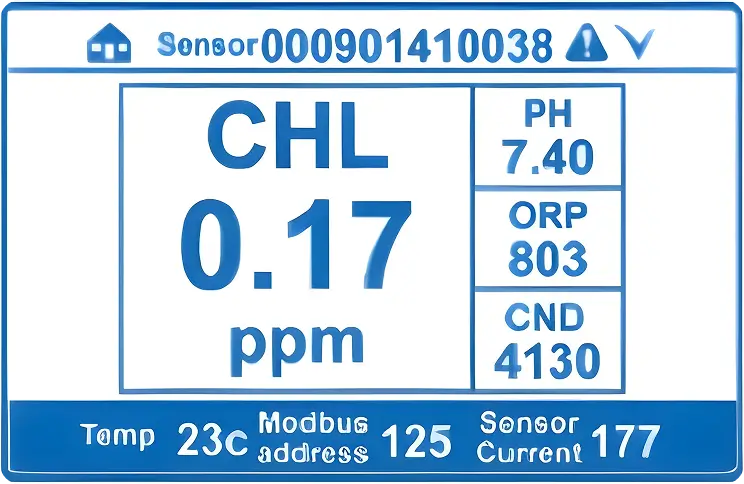Why multiparamter
- Home
- Why multiparamter
Measures 5 parameters on One Sensor
MP5-A provides operators with 5 critical water parameters every minute. It measures free chlorine, pH, conductivity, temperature, and oxidation reduction potential (ORP).

Why Do I Need a Multiparameter Sensor?
The Advantages of Multiparameter Sensors in Water Quality Monitoring

Understanding the Complexity
Amperometric sensors, used for measuring substances like chlorine, are influenced by multiple factors including temperature, pH, and conductivity. Each of these parameters can skew readings if not properly managed.

The Multiparameter Edge
Why choose multiparameter sensors? These advanced devices account for and compensate for all influencing factors simultaneously. Unlike single-parameter sensors, our multiparameter systems ensure accurate chlorine readings by adjusting for pH, temperature, and conductivity effects in real-time.

Simplified Calibration
We’ve automated the calibration process. Our custom software means your sensors are often ready to deliver precise measurements right out of the box, with no need for manual recalibration as conditions change. This automation ensures accuracy better than ±5% across a broad spectrum of conditions.

Cost and Environmental Benefits
By integrating multiparameter technology, not only do we enhance accuracy, but we also eliminate the need for a continuous waste stream. This innovation saves between 70,000 to 138,000 gallons of treated water annually per unit, translating to approximately $360 in water cost savings each year.

Quality Control
Despite automation, human oversight remains key. Our quality control involves personal checks alongside spectrophotometric analysis to ensure that our sensors meet the highest standards.

Why It Matters
In environments where water quality is critical, having a system that accurately reads and adjusts for multiple parameters ensures safety, compliance, and efficiency. Visit www.halogensys.com to learn how our technology can benefit your operations.
Why Do I Need a Multiparameter Sensor?
The Advantages of Multiparameter Sensors in Water Quality Monitoring

Understanding the Complexity
Amperometric sensors, used for measuring substances like chlorine, are influenced by multiple factors including temperature, pH, and conductivity. Each of these parameters can skew readings if not properly managed.

The Multiparameter Edge
Why choose multiparameter sensors? These advanced devices account for and compensate for all influencing factors simultaneously. Unlike single-parameter sensors, our multiparameter systems ensure accurate chlorine readings by adjusting for pH, temperature, and conductivity effects in real-time.

Simplified Calibration
We’ve automated the calibration process. Our custom software means your sensors are often ready to deliver precise measurements right out of the box, with no need for manual recalibration as conditions change. This automation ensures accuracy better than ±5% across a broad spectrum of conditions.

Cost and Environmental Benefits
By integrating multiparameter technology, not only do we enhance accuracy, but we also eliminate the need for a continuous waste stream. This innovation saves between 70,000 to 138,000 gallons of treated water annually per unit, translating to approximately $360 in water cost savings each year.

Quality Control
Despite automation, human oversight remains key. Our quality control involves personal checks alongside spectrophotometric analysis to ensure that our sensors meet the highest standards.

Why It Matters
In environments where water quality is critical, having a system that accurately reads and adjusts for multiple parameters ensures safety, compliance, and efficiency. Visit www.halogensys.com to learn how our technology can benefit your operations.